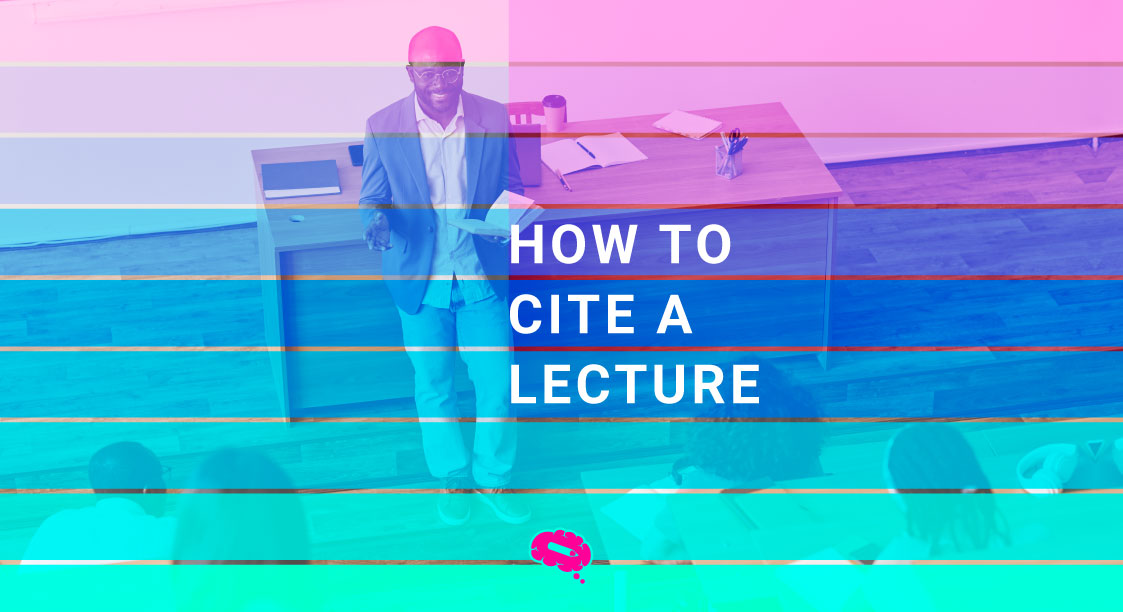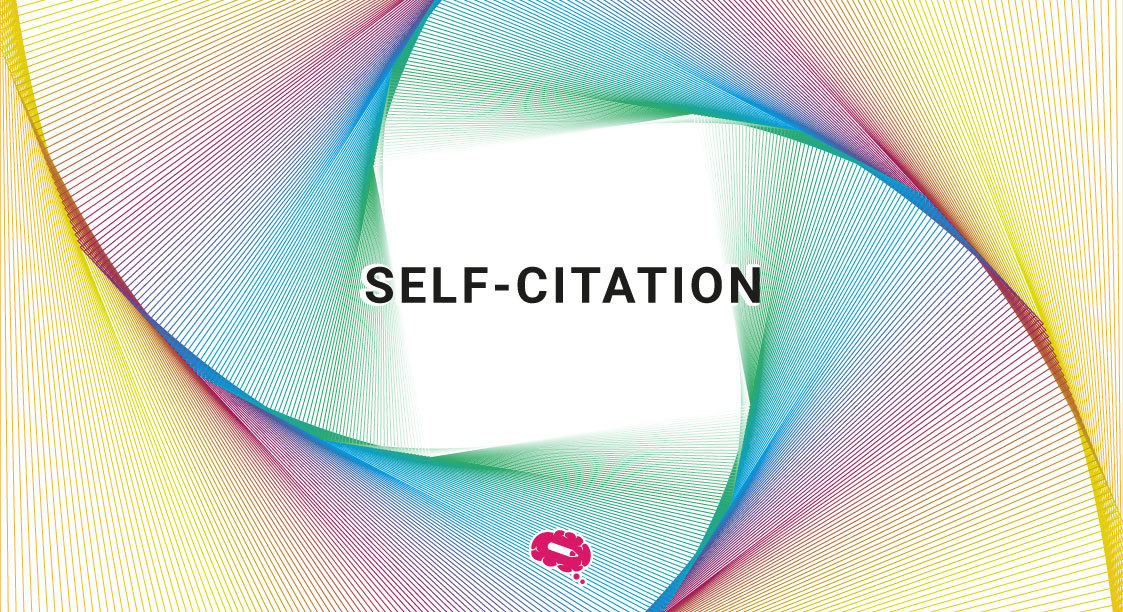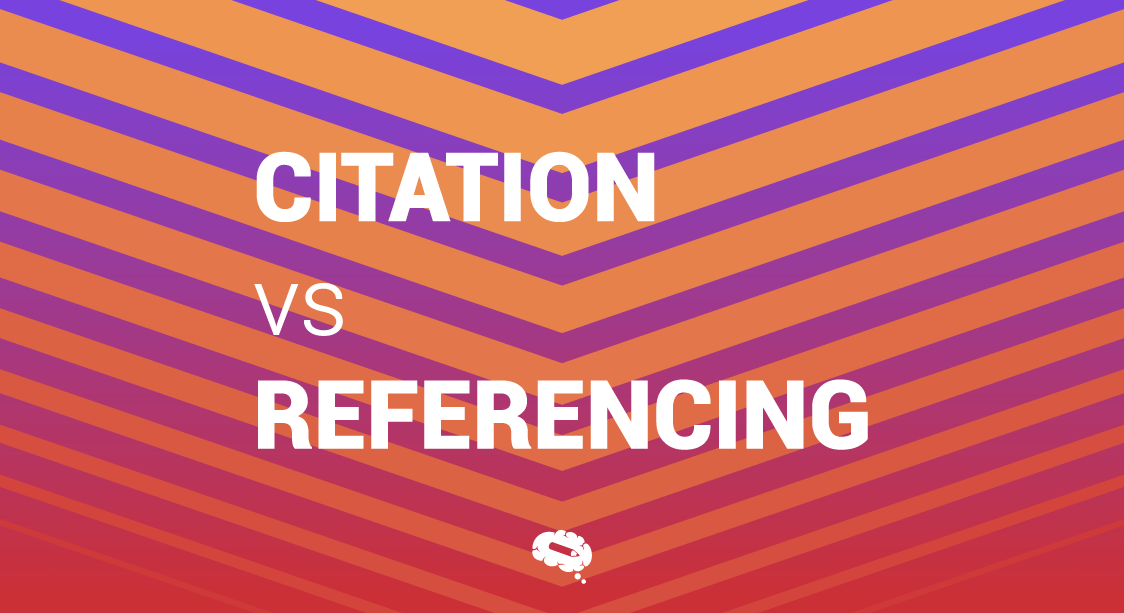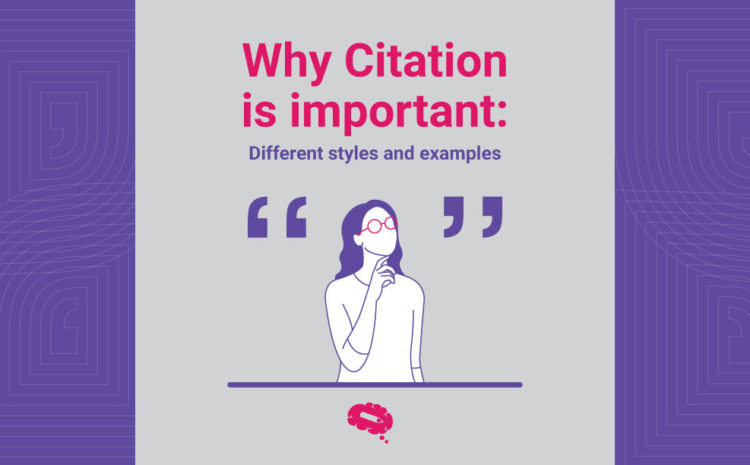Citing a lecture is a crucial aspect when it comes to academic writing. Doing this allows your work to be more credible and knowledgeable.
When starting your academic writing process, you must know how to cite a lecture. If not, then this article is for you. This article will explore all about citing a lecture in academic writing, its types, and how it’s done. So, relax and read till the end to gain invaluable knowledge.
How To Cite A Lecture In Academic Writing?
Citing a lecture in academic writing involves acknowledging the source of information obtained from a lecture, ensuring your work is credible, and respecting intellectual property.
Following proper citation guidelines helps avoid plagiarism and demonstrates your attention to detail.
Basic Format: The format for citing a lecture depends on the citation style you are using, such as APA, MLA, or Chicago. Each style has specific rules.
APA Style
In APA format, include the lecturer’s name, the date of the lecture, the title of the lecture in italics, and the phrase “Lecture notes” or “Lecture” in brackets, followed by the institution name.
Example:
Smith, J. (2023, April 5). Understanding Quantum Mechanics [Lecture notes]. University of Science.
Also read: How to Make Citations using APA Formatting: A Guide
MLA Style
In MLA format, include the lecturer’s name, the title of the lecture in quotation marks, the course name, the date, and the institution’s name.
Example:
Smith, John. “Understanding Quantum Mechanics.” Physics 101, 5 Apr. 2023, University of Science.
Following these guidelines ensures your citations are clear and professional. Always double-check the specific requirements of the citation style you are using to ensure accuracy.
Also read: A Writer’s Guide to MLA Format: How to Get It Right
Understanding Citations
Let us now understand why citations are important and why they matter the most in academic writing:
Purpose Of Citing Lectures
Explanation Of Academic Integrity
Citing lectures is vital for maintaining academic integrity. It involves giving proper credit to the original source of information, which is a fundamental ethical practice in academia. By citing your sources, you avoid plagiarism, demonstrate honesty, and show respect for the intellectual property of others.
Importance For Scholarly Work
Citing lectures and other sources enhances the credibility of your scholarly work. It allows readers to verify your information and follow up on your research. Proper citations also reflect thorough research and a strong foundation in existing knowledge, which strengthens your arguments and findings.
Common Citation Styles
APA Style
- Used mainly in social sciences.
- Emphasizes the author’s name and publication year.
- Example: (Smith, 2023).
MLA Style
- Common in humanities, especially literature and arts.
- Focuses on the author’s name and page number.
- Example: (Smith 23).
Chicago Style
- Used in history and some social sciences.
- Offers two systems: notes and bibliography (footnotes/endnotes) and author-date.
- Example: (Smith 2023, 23) for author-date.
Related article: Chicago Style Citation Made Easy: Formatting and Examples
Harvard Style
- Similar to APA, used broadly across various disciplines.
- Emphasizes the author’s name and publication year.
- Example: (Smith, 2023).
Understanding and using these citation styles correctly ensures that your academic writing is clear, professional, and ethically sound.
Preparing To Cite A Lecture
Necessary Information
To cite a lecture accurately, you need to gather the following essential details:
- Speaker: The full name of the lecturer or presenter.
- Title: The title of the lecture. If there is no formal title, describe the topic briefly.
- Date: The date when the lecture was delivered.
- Location: The venue or institution where the lecture took place.
Having these details ensures that your citation is complete and provides enough information for readers to trace the original source.
Tips For Organizing Information For Easier Citation
Take Notes During the Lecture
- Jot down the lecturer’s name, the lecture title, the date, and the location as soon as the lecture begins.
- If the lecturer provides handouts or a syllabus, keep these materials for reference.
Use a Citation Tool or Template
- Employ citation management tools like EndNote, Zotero, or online citation generators to help format your citations correctly.
- Create a template or checklist to ensure you collect all necessary information for every lecture you attend.
Organize Your Notes
- Keep a dedicated notebook or digital document for lecture notes, including a section for citation details.
- Regularly update and review your notes to ensure all information is accurate and complete.
By identifying the essential details and organizing your information effectively, you can streamline the process of citing lectures and ensure your academic writing is precise and credible.
Citing a Lecture in APA Format
In-Text Citations
Structure for Quoting or Paraphrasing
When quoting or paraphrasing a lecture in APA format, include the lecturer’s last name and the year of the lecture. If quoting directly, also include the specific part of the lecture, such as a timestamp or slide number if available.
Example of an In-Text Citation for a Lecture:
- Paraphrasing: (Smith, 2023)
- Direct Quote: (Smith, 2023, 15:30)
Reference List Entry
Components of a Complete Citation: For the reference list entry, include the following components:
- Lecturer’s Name: Last name, Initial(s).
- Date: The full date of the lecture in parentheses.
- Title of the Lecture: Italicized.
- Description: Use “[Lecture notes]” or “[Lecture]” in brackets.
- Institution Name: The name of the institution where the lecture was given.
Example of a Full Reference List Entry: Smith, J. (2023, April 5). Understanding Quantum Mechanics [Lecture notes]. University of Science.
By following these guidelines, you ensure your APA citations for lectures are accurate and complete, enhancing the reliability of your academic work.
Citing a Lecture in MLA Format
In-Text Citations
Guidelines for Parenthetical References
In MLA format, in-text citations are brief and placed within parentheses. Include the lecturer’s last name and the specific page number or slide number if available. If no specific number is available, just include the last name.
Example Demonstrating an MLA In-Text Citation:
- Paraphrasing: (Smith)
- Direct Quote: (Smith 23)
Works Cited Entry
Breakdown of a Works Cited Entry for MLA
For a complete Works Cited entry, include the following elements:
- Lecturer’s Name: Last name, First name.
- Title of the Lecture: In quotation marks.
- Course or Event Title: Italicized.
- Date: The full date of the lecture.
- Institution Name: The name of the institution where the lecture was given.
A Model Works Cited Entry for a Lecture: Smith, John. “Understanding Quantum Mechanics.” Physics 101, 5 Apr. 2023, University of Science.
Following these MLA guidelines ensures your citations are clear and properly formatted, contributing to the credibility and academic integrity of your work.
Citing a Lecture in Chicago Style
Footnotes and Endnotes
How to Format Notes for Direct Quotes and Paraphrased Material
In Chicago style, you can use either footnotes or endnotes to cite sources. For lectures, include the lecturer’s full name, the title of the lecture in quotation marks, the event or course name, the date, and the location.
Sample Footnote for Citing a Lecture:
- John Smith, “Understanding Quantum Mechanics,” Physics 101, April 5, 2023, University of Science.
Bibliography Entry
Elements of a Chicago Style Bibliography Citation
For the bibliography, provide the lecturer’s name, the lecture title in quotation marks, the course or event name, the date of the lecture, and the institution where the lecture was given. The elements are similar to those in the footnote but formatted differently.
Example of a Lecture Citation in a Bibliography: Smith, John. “Understanding Quantum Mechanics.” Physics 101, April 5, 2023, University of Science.
Using Chicago style footnotes, endnotes, and bibliography entries correctly ensures your citations are thorough and professional, adding credibility to your academic work.
Citing a Lecture in Harvard Style
In-Text Citations
Constructing Harvard Style In-Text References
In Harvard style, in-text citations include the lecturer’s last name and the year of the lecture. If you are quoting directly, include the specific part of the lecture, such as a slide number if available.
In-Text Citation Example for a Quoted or Paraphrased Lecture:
- Paraphrasing: (Smith, 2023)
- Direct Quote: (Smith, 2023, slide 5)
Reference List Entry
Outline of a Harvard Style Reference List Citation
For the reference list, you need to include the lecturer’s last name and initials, the year of the lecture in parentheses, the title of the lecture in italics, the format in brackets (e.g., [Lecture]), the course name, the date of the lecture, and the institution where the lecture was given.
Complete Reference List Entry for a Lecture Following Harvard Style: Smith, J. (2023). Understanding Quantum Mechanics [Lecture]. Physics 101, 5 April. University of Science.
Using Harvard style citations correctly ensures your academic writing is clear, properly referenced, and respects academic conventions.
Electronic Lectures and Webinars
When citing digital lectures and webinars, it is important to include additional details that are specific to online content. This includes the URL or the platform where the lecture or webinar is hosted, as well as the date of access if the content is subject to change.
Example Citation for an Online Lecture or Webinar:
APA Style: Smith, J. (2023, April 5). Understanding Quantum Mechanics [Webinar]. Retrieved from https://example.com
MLA Style: Smith, John. “Understanding Quantum Mechanics.” Physics 101, 5 Apr. 2023, University of Science. Webinar. Accessed 5 May 2023. https://example.com
Chicago Style: John Smith, “Understanding Quantum Mechanics,” Physics 101, April 5, 2023, University of Science, Webinar, accessed May 5, 2023, https://example.com
Harvard Style: Smith, J. (2023). Understanding Quantum Mechanics [Webinar]. Physics 101, 5 April. University of Science. Accessed 5 May 2023. Available at: https://example.com
By including the necessary adjustments for online materials, such as the URL and access date, you ensure that your citations are complete and provide clear directions for readers to locate the original digital content.
In conclusion, properly citing lectures is essential for maintaining academic integrity and enhancing the credibility of your work. It demonstrates respect for intellectual property and allows readers to verify the sources of your information. By following the specific guidelines for different citation styles – APA, MLA, Chicago, and Harvard – you ensure that your citations are accurate and professional.
Science Figures, Graphical Abstracts, And Infographics For Your Research
Mind the Graph is a comprehensive tool that helps you explore visual storytelling using science figures, graphical abstracts, and infographics for your research. You can explore 75000+ illustrations across different fields and make your research work easy. Subscribe now to unleash the benefits of the tool.

Subscribe to our newsletter
Exclusive high quality content about effective visual
communication in science.








